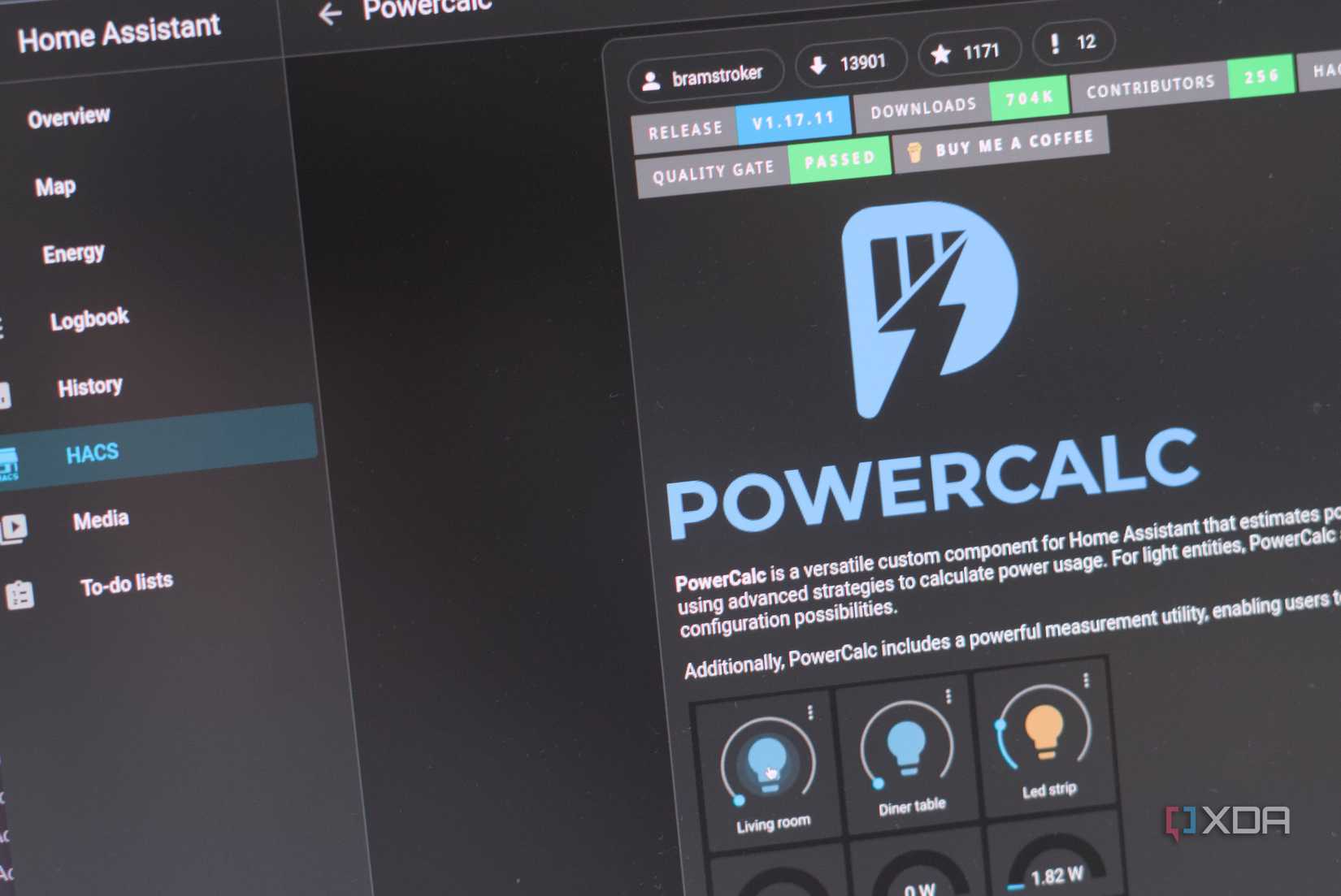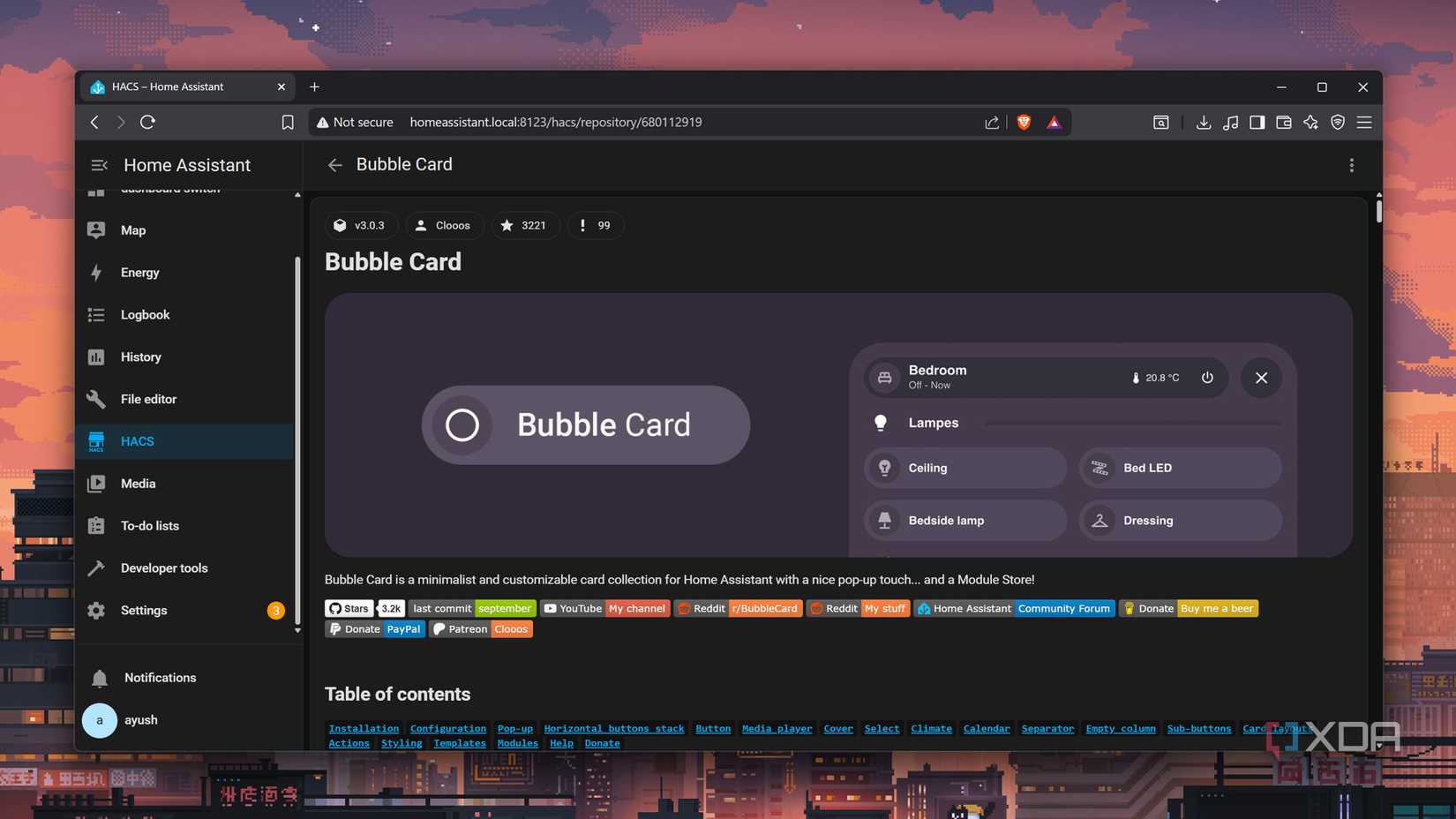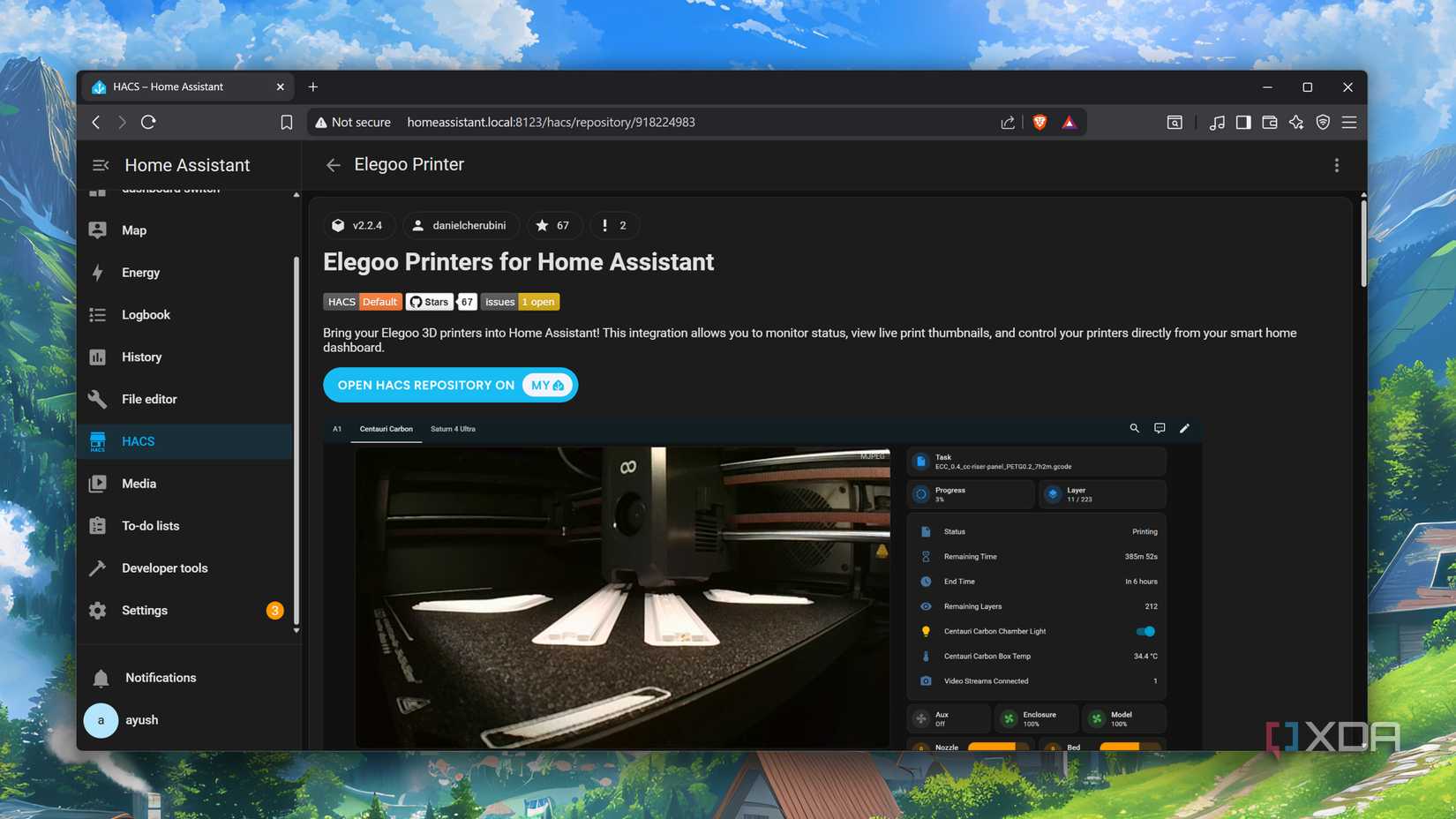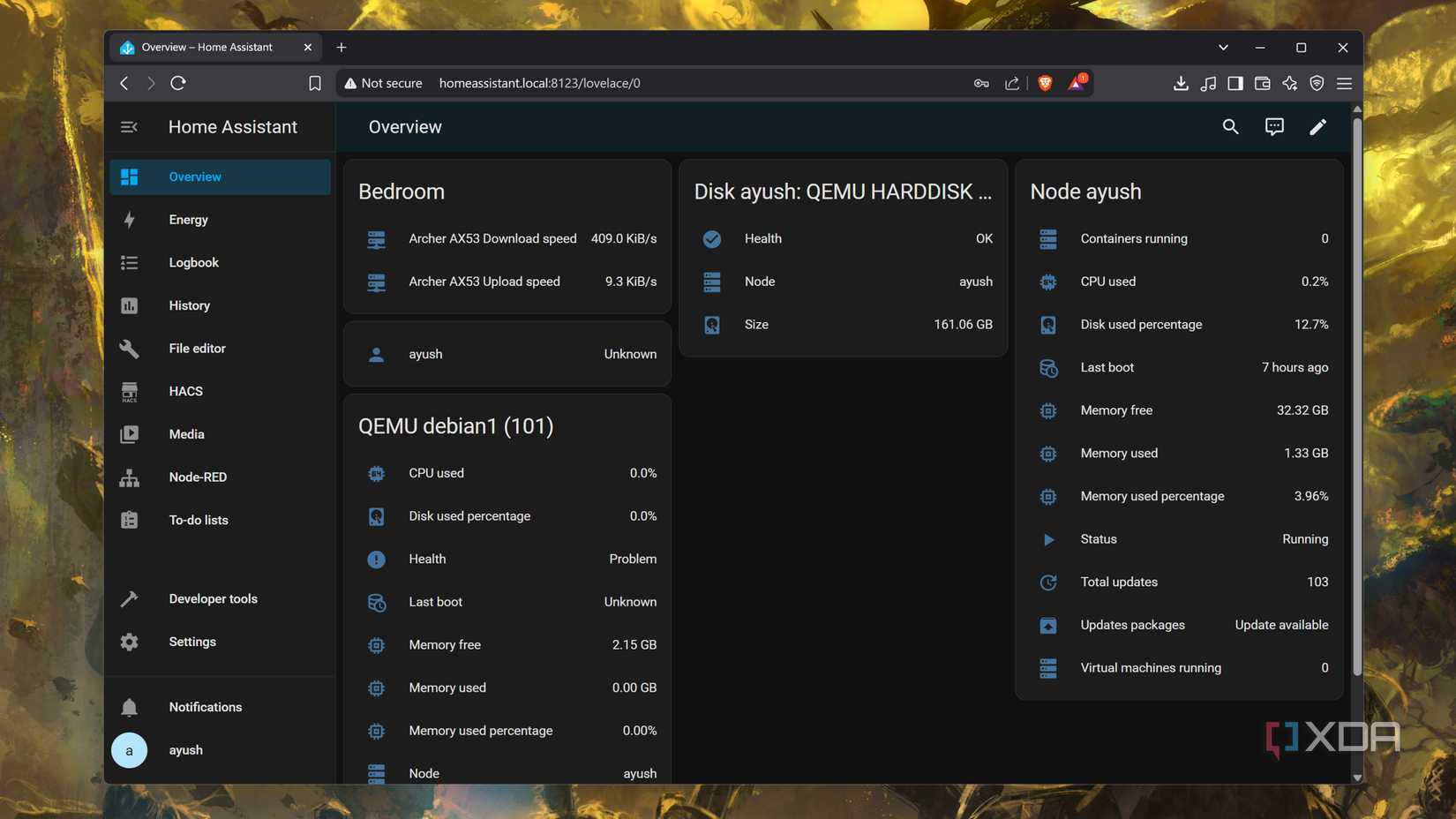Ayush Pande is a PC hardware and gaming writer. When he's not working on a new article, you can find him with his head stuck inside a PC or tinkering with a server operating system. Besides computing, his interests include spending hours in long RPGs, yelling at his friends in co-op games, and practicing guitar.
Besides its superior compatibility with smart devices and top-tier automation prowess, versatility is another killer feature of Home Assistant. After all, you can arm your Home Assistant with powerful add-ons and community-created blueprints. That’s before you include the Home Assistant Community Store, which lets you extend the functionality of your HASS server with hundreds of integrations. As someone who uses Home Assistant to control practically every IoT device (and even certain home lab devices) in my smart home, here are some of the best HACS integrations I’ve found so far.
Powercalc
To estimate the average power consumption of my equipment

When you’re just starting out, the energy siphoned by your smart devices may be miniscule. But once you start decking out your living space with tons of IoT gizmos, you’re bound to see an uptrend in your electricity bills. Luckily, it’s easy to monitor the power hogged by most smart devices, and you can even pair dumb gadgets (for lack of a better term) with smart plugs to keep track of their energy consumption.
But what about smart lights, fans, and other inexpensive devices that may not feature built-in power sensors? If you use Home Assistant, the Powercalc integration from HACS uses certain metrics to estimate the average energy consumed by these gadgets and helps you lower your electricity bills by creating virtual power strategies for each device.
Bubble Card
Easy-to-control UI for mobile users

While the default dashboard is great for managing your Home Assistant devices, you also have the option to create customized interfaces on HASS. But if you don’t want to spend hours creating the perfect interface, you can integrate third-party offerings into your HASS setup. Besides offering neat UIs to show off your smart gadgets, community-created dashboards and card collections are a great way to separate your paraphernalia.
The Bubble Card integration is one of them, and it works exceedingly well on Home Assistant’s mobile app. Despite packing a minimalist appearance, this handy integration includes versatile buttons, sliders, media players, pop-ups, and other cards to make controlling your entities a lot easier when you’re away from your PC.
3D printer integrations
There’s one for every major brand!

With all their settings, toggles, and menus, 3D printers can require a little bit of fine-tuning to turn virtual assets into tangible models. Although OctoPrint is a versatile self-hosted service for managing 3D printers, you can even configure them directly from Home Assistant using the right HACS integrations.
I’ve got an Elegoo Centauri Carbon, so I use the Elegoo Printers integration to display live temperature metrics, print times, camera feed, and other information on my HASS dashboard. Better yet, I can even control the fan speeds as well as the heat bed and nozzle temperatures. This particular integration also supports automation blueprints and features a built-in proxy server to allow multiple applications to connect with my 3D printer, which is a godsend when I’m printing stuff for my friends and family.
Frigate
Despite its lightweight nature, Frigate is one of the best tools for managing your surveillance system. It’s compatible with a plethora of AI accelerators (including the Raspberry Pi AI HAT), features an uncluttered UI, and has terrific tracking and motion detection provisions.
If you’re as much of a Home Assistant fan as I am, you’ll find the Frigate integration a handy addition to your HASS suite. That’s because it can pull all the statistics – including raw camera footage – from Frigate and display it on Home Assistant. If you want, you can even create separate dashboards entirely for your Frigate-powered NVR system, and even combine it with blueprints that can send alerts as soon as anything fishy happens on-camera. While we’re on the subject of notifications…
Gotify
Especially useful with trigger-action automations
For the uninitiated, Gotify is a lightweight alert server that can pull notifications from different services and display them on its mobile (and web) app. I tend to use Gotify to receive alerts from all my self-hosted services – including Home Assistant, though the smart home management server requires an HACS integration to connect to Gotify.
Plus, Gotify meshes exceedingly well with the trigger-action automations on Home Assistant. That way, you can receive alerts for practically every event in your smart home, ranging from simple motion sensors to the Frigate devices connected via their own integration.
Proxmox
Control entire PVE workstations

Proxmox has become a big name in the home lab ecosystem, and its reputation is well deserved. From its FOSS nature and massive community support to its compatibility with ZFS pools, LXCs, cluster environments, and a handful of other advanced features, Proxmox is hands-down the best virtualization platform out there – and it’s precisely where I’m hosting my Home Assistant server.
The best part? The Proxmox integration for Home Assistant not only pulls the essential statistics of your VMs, LXCs, and host machines, but also offers a neat way to control them directly from your smart home management hub. Throw in a decent dashboard and some automations, and you can put together a quirky Proxmox setup that works in tandem with your smart home devices.
There’s no shortage of cool HACS integrations out there

So far, I’ve highlighted the integrations I use the most, but there are just as many useful offerings on the Home Assistant Community Store. If you’ve got multiple devices with built-in batteries, the Battery Notes integration will serve you well. There’s also a Vikunja integration that lets you generate notes and send them to the self-hosted to-do list builder. There’s also Remote Home Assistant, which is quite useful when you’ve got multiple HASS instances that you’d like to pair together.
.png)












 English (US) ·
English (US) ·